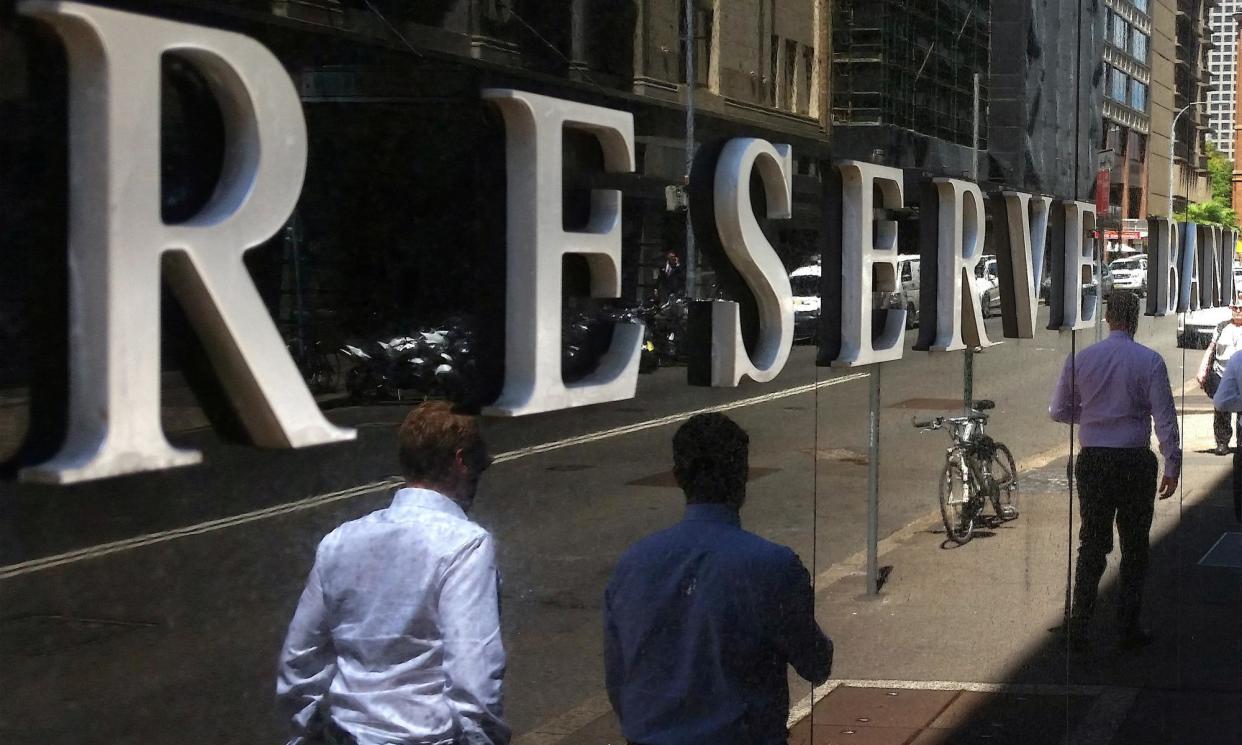Reserve bank leaves interest rate on hold at 4.35% with borrowers left waiting for relief

Australia’s borrowers have been given another reprieve, with the Reserve Bank leaving its key interest rate on hold for a fifth consecutive board meeting but retaining the option of a further rate hike if needed.
As expected by economists, the RBA held its cash rate unchanged at its 12-year high of 4.35% at the conclusion of a two-day meeting that wrapped up on Tuesday afternoon.
The bank’s communique, though, warned that “inflation remains above target and is proving persistent”.
Related: Four charts that prove the huge financial pressure many Australian households are under
“Inflation is easing but has been doing so more slowly than previously expected and it remains high,” it said in a statement.
“The path of interest rates that will best ensure that inflation returns to target in a reasonable timeframe remains uncertain and the Board is not ruling anything in or out,” it said, repeating a mantra that leaves it the option of another rate rise if needed.
Mortgage holders on a typical $600,000 loan are paying back about $1,450 more each month since the central bank started its cycle of 13 rate rises in May 2022, according to RateCity.
The prospect of a rate cut before the end of 2024 dimmed after inflation slowed less than expected in the March quarter. The RBA even predicts consumer price increases will accelerate in the current quarter before resuming their retreat.
The stubborn inflation comes even as the economy all but stalled at the start of this year. Even so, employment growth has remained surprisingly strong with the jobless rate hovering at about 4%, helping households meet the rising cost of living.
More relief will kick in from 1 July as the stage-three tax cuts kick in, and the start of four quarterly energy rebates of $75 per residence. But the RBA will be watching to see if extra spending – including a drawdown of savings – turns out to be excessive, prompting its next move to be a rate rise rather than a cut.
The immediate market response was modest with the Australian dollar strengthening about 0.1 US cents to about 66.2 US cents. Shares also briefly pared some of the day’s gains before recovering to end 1% higher..
The RBA has been trying to restore a balance between supply and demand. For now, though, “broader data indicate continuing excess demand in the economy, coupled with elevated domestic cost pressures, for both labour and non-labour inputs”, the central bank said.
Related: Most boomers won’t give up retirement lifestyle to help children, Australian survey finds
In her subsequent media conference, the RBA governor, Michele Bullock, confirmed the board considered the case for an interest rate rise along with the option to stay put.
“[I]t’s just going to be a slow grind to bring inflation down,” she said, adding the RBA was still forecasting “to have inflation back down to the [2%-3% target] band by the end of 2025.”
“We still think we’re on the narrow path” of bringing inflation down without triggering a recession, Bullock said, adding “it does appear to be getting a bit narrower”.
The RBA’s statement noted that “recent budget outcomes may also have an impact on demand, although federal and state energy rebates will temporarily reduce headline inflation”.
Anders Magnusson, an economics partner at BDO, said that while the Swiss, Canadian and European central banks had cut interest rates, “Australia’s economy is not yet ready to follow”.
“While the unemployment rate remains historically low, the labour market is clearly easing as job vacancies and average hours worked per week decrease,” he said.
“Combined with a recent drop in the household savings ratio and weak retail spending, the RBA should not be worried about the labour market or domestic demand.”
Magnusson predicts the next move will be arate cut but not until the first quarter of 2025.

 Yahoo News
Yahoo News 
